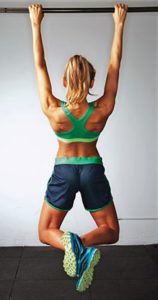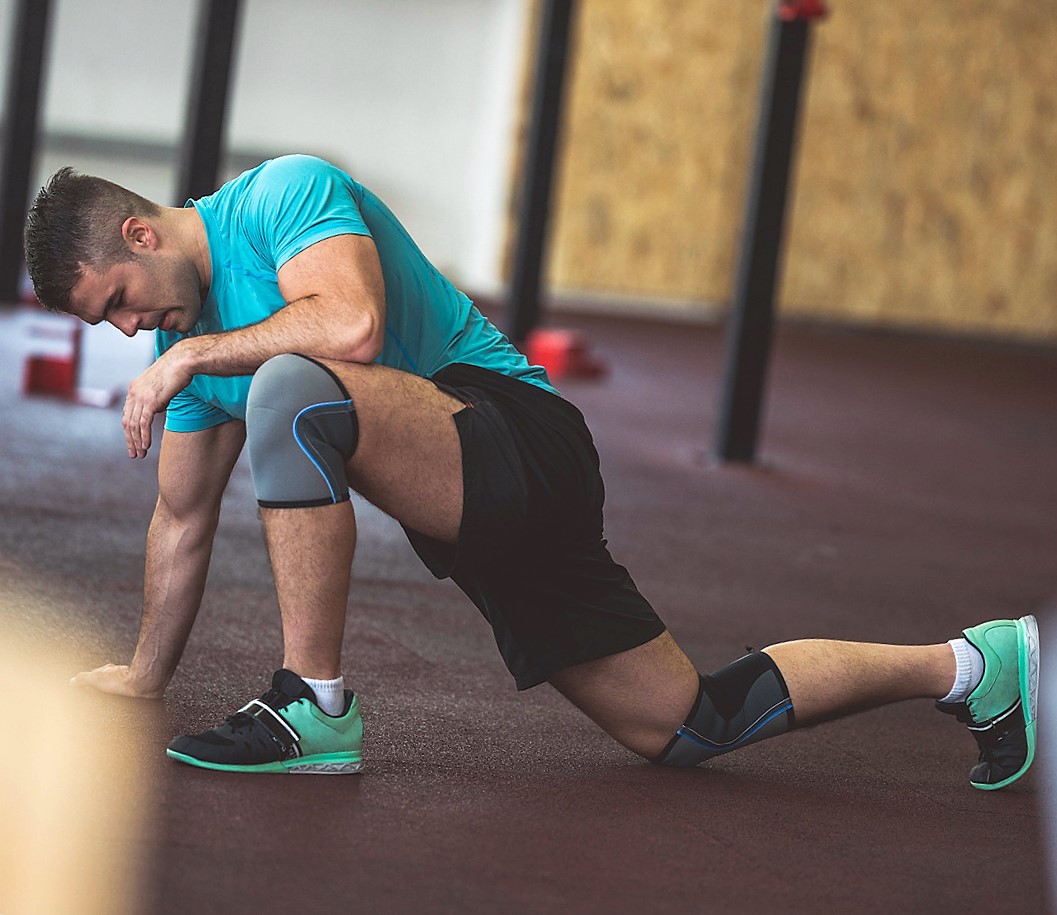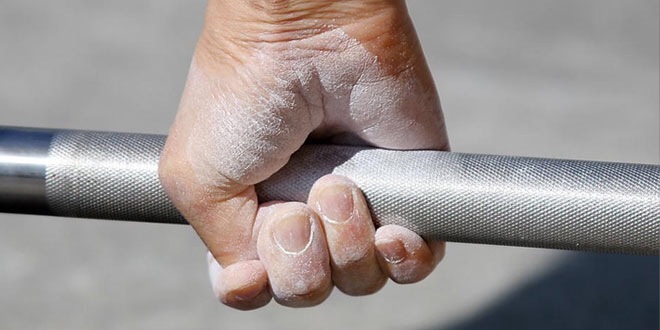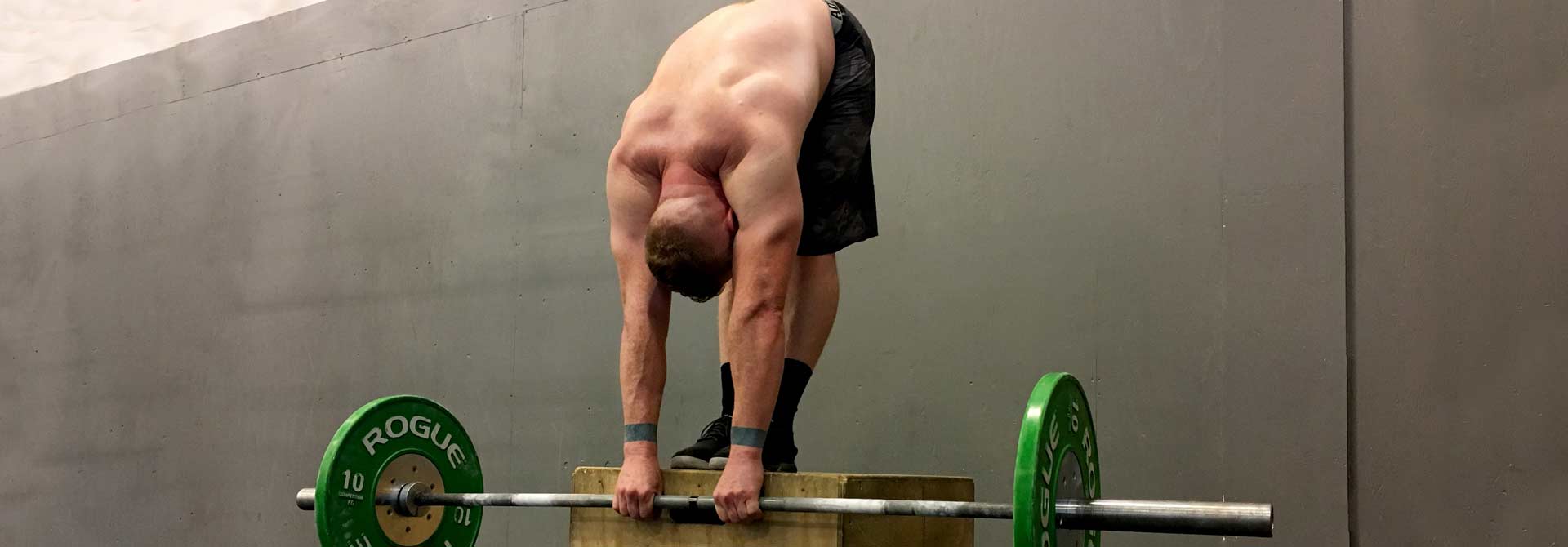If you’ve ever done any amount of heavy lifting, you know that it’s not generally a good idea to pop into the gym, slip under the barbell, and start off with a 90% TM (training max) set – without warmup, that is.
Not only will it feel incredibly shitty, but you’ll generally also feel much weaker than you could be. The point of training for a powerlifting competition is to become as proficient in a lift as possible.
If you want max strength, you need to spend as much time lifting heavy weight as possible. That means preparing yourself for said weight, in and outside the gym. It’s the same reason training your heavier working sets with a belt is generally a good idea.
A weightlifting belt is going to let you overload your lift by an additional 5%-10%, without weakening the core, while giving you the benefit of practicing how you play – meaning, take some time to train in competition gear if you want to lift better during competition.
Warmups Matter
In other words: to be at your strongest, once given that you exercise proper form and have been at the sport long enough not to take dumb risks, you should be taking every advantage you can get to put more weight on the bar, rather than purposefully gimping yourself thinking that might make you stronger.
Warmups are very specific to an individual’s needs and training styles. It helps a lot to watch how other people warm up and adapt their techniques into your own set up when first starting out in powerlifting.
But as the years pass, you should begin to form a warmup that works best for your body and your needs. That means playing around with your warmup and seeing what lets you put up the most weight.
There are a few do’s and don’ts when it comes to warming up for powerlifting, and we’re going to go over these today. But to answer the question: it depends on you how much warmup you need. Enough to lift better, but not so much that you start to lift worse.
Warmups Are Person-Specific
I’ve seen and heard of people who go for short jogs before they lift, and I’ve heard and seen people who walk onto the gym floor, start their prehab, and go straight for the barbell. You owe it to yourself to try different things, but always keep your warmup short. You’re not supposed to get a workout in before you start training.
That means, instead of an actual jog, understand what “warming up” is supposed to do for you – and then adapt a warmup to specifically pay attention to the issues you personally experience the most, such as specific tightness, weaknesses, and individual issues such as environmental temperature (you need less of a warmup in a hot gym than during cold weather), and clothing.
The point of cardio during a warmup is to increase the body’s core temperature. Increased core temperature positively influences muscle flexibility and positively influences leg strength, grip strength, and aerobic performance.
Training in a warm environment is good for just about every factor of physical performance save for anaerobic strength, which doesn’t significantly increase or decrease based on the temperature of your gym. However, a colder gym does correlate with a strength decrease, making a proper warmup very important.
What A Warmup Needs to Do
When designing your warmup, you’ll want a checklist of things that absolutely need to happen. How you end up doing your warmup, however, is almost not really important. What matters is that it’s a ritual that gets you primed for lifting.
For example: various elite lifters use very different warmup routines. Some use a variety of activation exercises and bodyweight exercises, like lunges for stretching and warmup, duck walks and banded side to side walks, and dynamic stretches like leg swings.
Others do a few minutes on an exercise bike and then do some static stretching. Yet others start with their shoulders and upper body even on squat or deadlift days, using banded pull-aparts and shoulder dislocations, working their way down.
For a squat-heavy day, my warmup consists of leg swings followed by Cossack squats, squat holds, single-leg hip thrusts, walking lunges, and dynamic calf stretches. I use a foam roller to massage my IT bands and loosen up my quads, which are usually very tight and hard from sitting.
Then I get under the barbell and start with a slow descent into a paused squat, exploding up. Sometimes, I take more time between sets to work my glutes and IT band, which usually relieves any complaints I might have in my hip.
When designing your own warmup, take into consideration what your weaknesses might be for any given lift. When warming up for a bench press for example, target the shoulders and thoracic to give yourself a good arc and maintain tight scapulae.
Key Pointers
Other things to consider are:
- Increase your core temperature: there are plenty of ways to increase core temperature, and we’ve established that increased core temperature relates positively to strength. I’m not much of a treadmill guy, so I actually use my lunges and squats to get myself warmed up. If it was a cooler day (I live in the tropics), I’d use the jump rope and start at a gentle pace. Stair climbing works well too.
- Utilize stretching: on a study regarding leg extension, there was no increase or decrease in strength after static stretching for 30 seconds. However, dynamic stretching did increase strength. Another study, however, analyzed the peak muscle strength of the quadriceps and hamstrings after static and dynamic stretching, and found no significant change. Another study concluded that excessive static stretching decreased strength prior to a training session. To be on the safe side, and in the interest of saving time, I recommend doing whatever feels best – but for a limited amount of time.
- Use a workout-specific warmup: efficiency in the gym matters to a certain degree, and that means applying your warmups in a fashion that best fits your specific goal of the day. I consider static quad stretching before a squat to negatively affect my performance, which could very well be a placebo effect – but I like doing it before a bench press session, to get a better position on the bench. Since I occasionally get hip pain and have tight hips, I try to stretch my flexors prior and after every lifting session. Being consistent about it diminishes pain considerably, but I can forget myself or get lazy. I spend more time on shoulder flexibility during pressing days, especially for overhead pressing, because of the mobility demands of the behind-the-neck press.
Warmup and Prehab
I consider prehab to a part of the warmup process. Prehabilitation is the process of using certain exercises to prevent injury, rather than rehabilitation, which is an important part of post-injury recovery.
Shoulder prehab is perhaps the most important prehab for anyone who works with a barbell, because the shoulders, being the most flexible joints, are also the most prone to injuries. Strong, flexible shoulder tendons reduce your risk of injury, alongside smarter programming, and body awareness.
Some of these can be done before lifting, and some should be done as part of your accessory work. Some should be done both before and after. It depends on how pressing of an issue your mobility is. A person with shoulder mobility issues should do a lot of prehab to stretch them and prevent an injury. A couple prehab exercises that I wholly recommend include:
 Scapular pulls
Scapular pulls
Also known as scapular retraction, this is basically just squeezing your shoulder blades together. It’s to improve your tightness under the bench, and subsequently decrease the risk of a shoulder injury through pressing. Maintain tightness and work on form by using a cable machine or pull-up bar to pull your chest up/forward using your scapula.
Shoulder “dislocations”
They’re called shoulder dislocations, but you’re not pulling a Martin Riggs. Bands are best here, but if you don’t have those, a stick will do too. Just don’t use the barbell. Keep your core tight and your spine stacked on top of your hips, to maximize the work your upper back and shoulders are putting into the process. If you’ve got the shoulders for it, skin-the-cat/the German hang is great too. Grab onto a pullup bar, weave your legs through between your arms, and stretch, like this.
Cat-and-cow
Need a better bench arc and a healthy spine after tons of sitting? Do this. You’re basically in a quadruped position, and then use your spine and hips to form a concave and convex with your back. To further target the thoracic, keep your hips and lower back in a neutral position and only stretch your back from the point just below your shoulder blades.
Banded pull-apart/face pulls
The rear delts need frequent amounts of love, especially because we love to sit around and let our shoulders come together. This can also help with thoracic extension, although I prefer to target that during cat-and-cow. I usually work these into my lifting session both before and after a press, usually with one or two sets before I bench, and several sets after (alongside heavy rows or dumbbell rows).
Couch stretch
Highly effective for my hips. If these are easy to you, you can progress to front splits and side splits after your lifting sessions. This is especially important if you pull sumo, because a more flexible groin reduces your risk of pulling a muscle during a very wide stance.
Cossack squats
Start in a wide stance, then slowly squat to one side, stretching the other leg out while you do. Progress until you can go ass-to-grass. This is a flexibility exercise, to keeping an upright back isn’t too important, but you can work on that if you’re otherwise flexible in the hips and legs. I like to do a Cossack squat into a deep stretch, both with the toes up and with the foot flat on the floor.
Neck exercises
I come from a marital arts background, mostly Aikido and jiu-jitsu, and I’ve always admired wrestling power. Because of that, I’ve done a lot of neck bridges. They’re not always recommended, though. Good alternatives for neck health include isometric holds (pushing against your neck while keeping it in a neutral position) and headstands. A strong neck is important as you age, but it’s obviously much more important of you grapple or box. For powerlifters, there’s no obvious benefit, but I feel a lot of people neglect the neck.
Stretching After Lifts
I wholly recommend static stretching after your workout to hit points that you’re particularly worried about. If you have any mobility issues, then volume and consistency is key to ironing them out. That means lifting frequently, but it also means stretching frequently. This has little to do with your warmup, except to tell you that if you spent a lot of time stretching during your warmup, cut that out now.
Make room for stretches after a workout, but keep in mind that a warmup is meant to prepare you for the lifting session ahead by getting you warm, limber, and ready – not by getting everything so loose that you have trouble staying tight under the bar, and can’t get your muscles to move as fast as they should.




